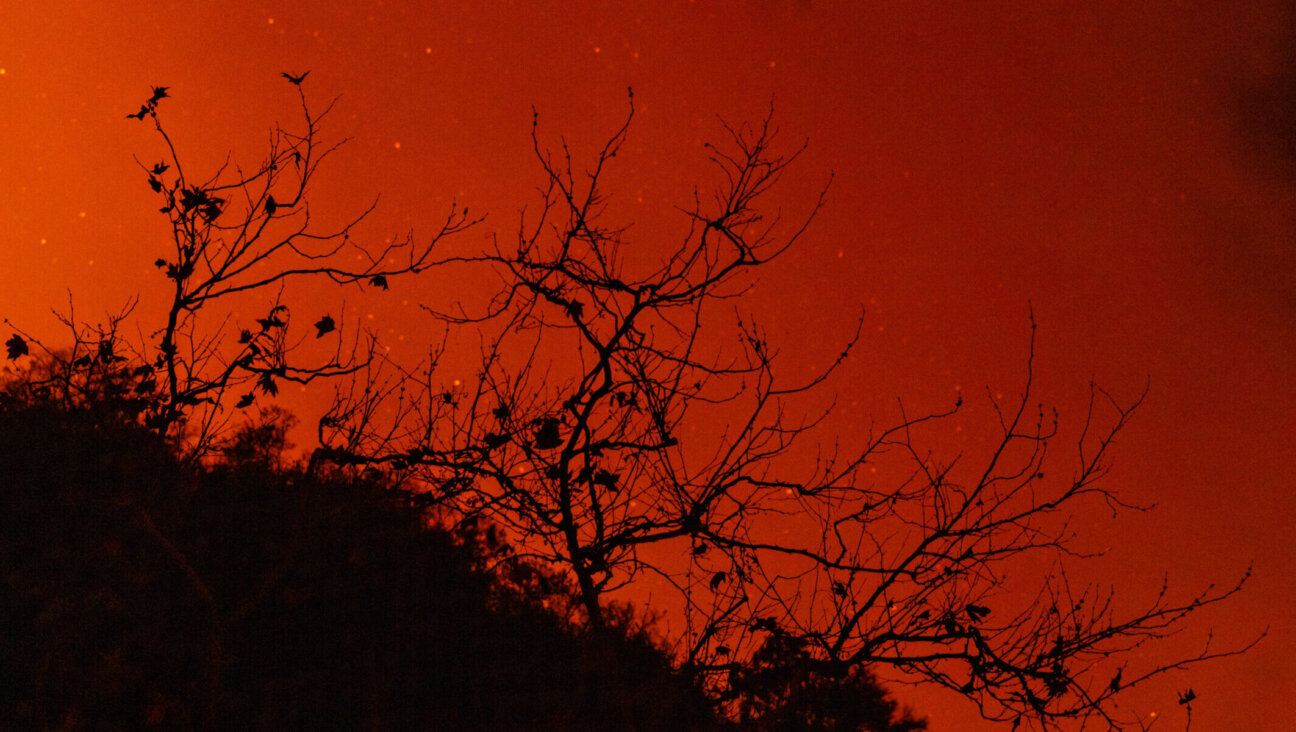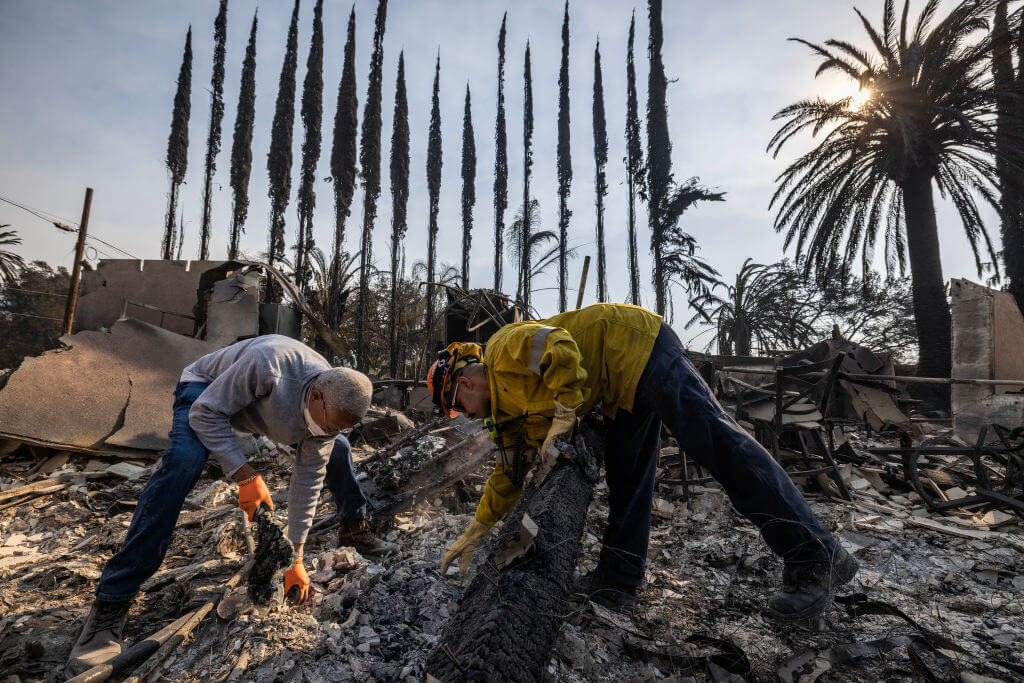At the Height of World War II, Dutch Jews Found an Unlikely Refuge

Image by Wikimedia Commons
(JTA) – In her nightmares, Tilly Walvis pictured German soldiers storming the house where she was hiding and deporting her children and the Christian couple sheltering them.
Walvis had good reason to fear. At the time, her family was living in the home of Albert and Frederika Santing in Hoensbroek, a Dutch town in the southeastern province of Limburg. Next door lived a family of Dutch Nazis, and delivering the hidden Jews to the German occupation forces would have meant praises and a handsome reward.
Fortunately for Walvis, the soldier who entered the house in 1944 was American, and he was looking for Nazis, not Jews. According to an account from the Yad Vashem Holocaust center in Jerusalem, Walvis sought to assure him they were not hostile, so she told him in English that she was Jewish.
“Me too,” he replied, bringing tears of joy to Walvis’ eyes and wild cries of excitement from the other family members.
Walvis was among 2,200 Dutch and German Jews who survived the Holocaust in Limburg, a narrow sliver of a province near the Belgian and German borders that recent research has revealed to have been the safest place for Jews in the Netherlands during the Holocaust. Approximately 10 percent of Jews who went into hiding in Limburg were caught, roughly one-third the rate of Amsterdam.
Not only did Jews in Limburg survive the war in higher proportions than the rest of the Netherlands, but the region actually had more Jewish residents after the Holocaust than before, according to Herman van Rens, an amateur Dutch historian whose recent book, “Persecuted in Limburg,” was published last year ahead of the 70th anniversary of the region’s liberation.
Yet the story of the Holocaust in Limburg had remained unrecorded until van Rens and his wife, Annelies, began painstakingly collecting lists of Jews from dozens of municipal archives across the province. Through their work, the van Rens were able to show Limburg had twice as many Jews in hiding than previously thought.
In 1933, the Jewish population in Limburg stood at 800. Two waves of refugees – Germans before the war and Dutch following the German invasion – brought the Jewish population to 2,200 by 1945, according to van Rens. The 46 percent growth stands in stark contrast to the rest of the Netherlands, which lost 75 percent of its Jews in the Holocaust – a death rate matched in Western Europe only by Germany itself, with 88 percent, according to the Anti-Defamation League.
Limburg residents speak a unique dialect and share a proud tradition of tight-knit communities with little anonymity – characteristics that van Rens believes contributed to their willingness to take risks to save Jews.
“When you betrayed someone to death in Limburg, everybody knew and it carried different social implications than in Amsterdam,” van Rens told JTA.
The sentiment was so strong that Limburg police had virtually stopped proactive attempts to track down Jews by 1943, at a time when special bounty hunter units were stepping up efforts to catch Jews elsewhere in the Netherlands, among other countries.
In Amsterdam, a group known as the Henneicke Column received 7.5 guldens for every Jew delivered to the Germans. The price was later upped to 40 guldens. The group is believed to have been responsible for the deaths of 8,000-9,000 Jews.
In addition to offering refuge, Limburg also promised Jews a path out of Nazi-controlled areas altogether. The area is not as densely populated and flat as the rest of the Netherlands, and its limestone caves lead across the border to Belgium. In addition to those who hid in Limburg, approximately 3,000 Jews passed through the province on their way to Spain and Switzerland.
Van Rens also discovered another difference that he believes is key to understanding the high mortality rates elsewhere and to challenging the notion that Dutch Jews went like lambs to the slaughter.
“Unlike in Amsterdam and the northern Netherlands, where most Jews were rounded up by police who showed up one night unannounced at their doorstep and simply took them away, Limburg Jews received more time before they needed to report for deportation,” van Rens said.
In 1942, Limburg Jews under 60 received 24 hours to report to police. More than half didn’t show up, instead opting to go into hiding. A few months later, older Jews were given a week to report to police. Then, too, more than half went into hiding.
“So the perception of Dutch Jews being too docile, too obedient, clearly doesn’t hold up because when they were given a chance, even if just 24 hours, to save themselves, most made serious attempts to escape the Nazis’ claws,” van Rens said. “For me it was an encouraging discovery.”
Van Rens’ research has generated new interest in the Holocaust and won praise from some of Holland’s leading experts on the Holocaust, including Johannes Houwink ten Cate of the Dutch Institute for War, Holocaust and Genocide Studies, or NIOD, who called van Rens’ research “beyond question.”
“No one had the patience to conduct such detailed research before,” ten Cate said. “It’s drudgery.”
A message from our Publisher & CEO Rachel Fishman Feddersen

I hope you appreciated this article. Before you go, I’d like to ask you to please support the Forward’s award-winning, nonprofit journalism so that we can be prepared for whatever news 2025 brings.
At a time when other newsrooms are closing or cutting back, the Forward has removed its paywall and invested additional resources to report on the ground from Israel and around the U.S. on the impact of the war, rising antisemitism and polarized discourse.
Readers like you make it all possible. Support our work by becoming a Forward Member and connect with our journalism and your community.
— Rachel Fishman Feddersen, Publisher and CEO























